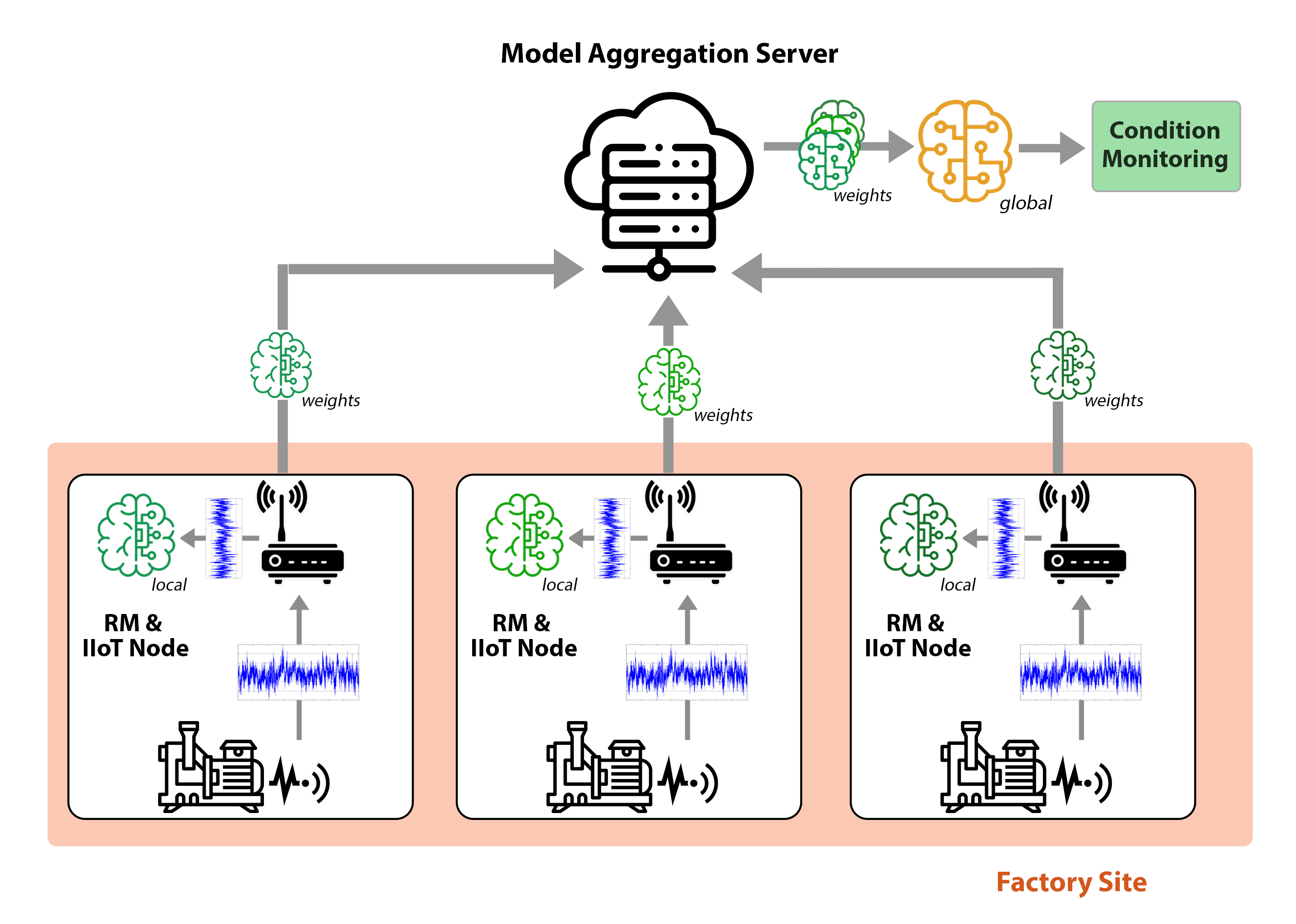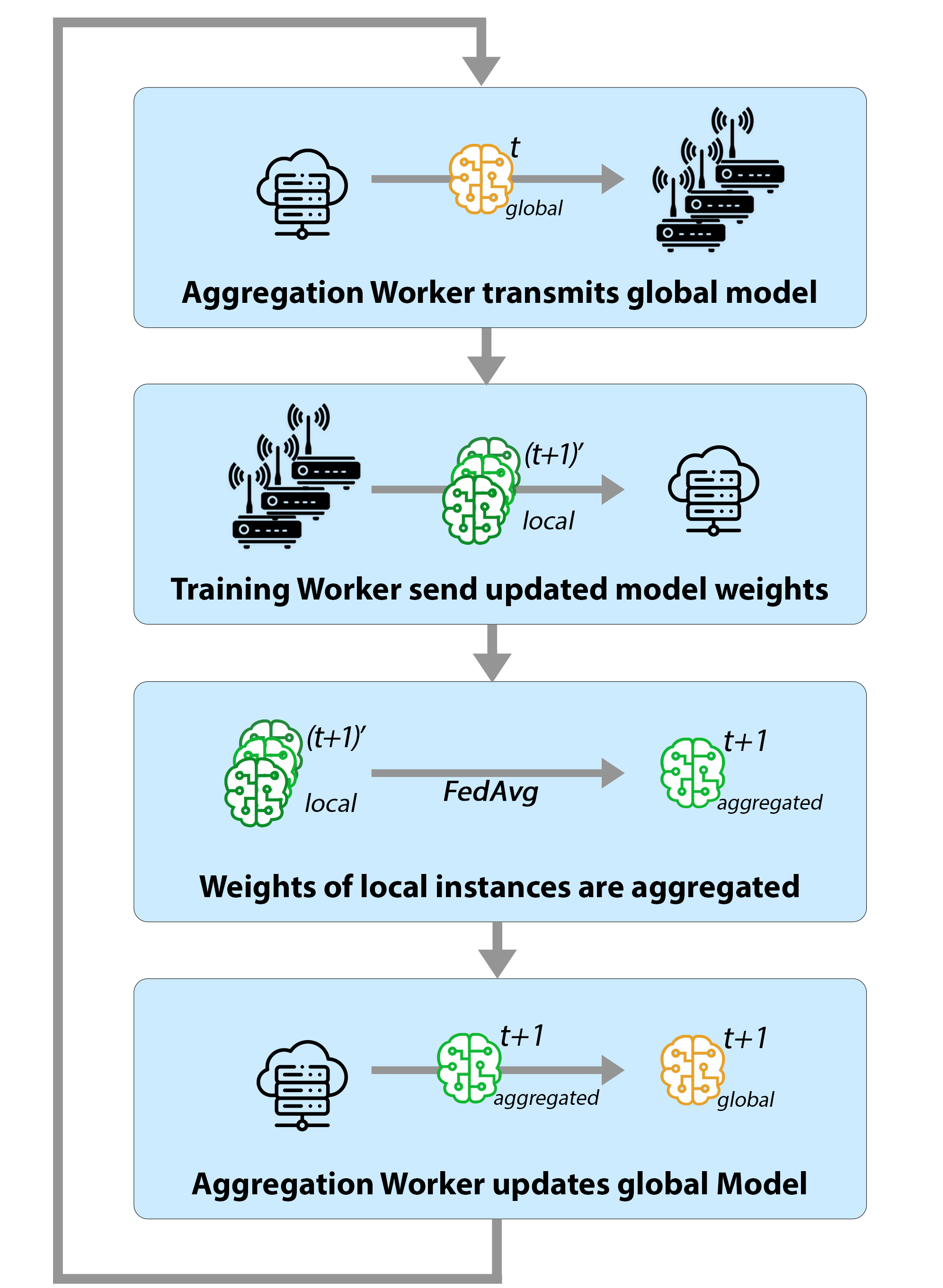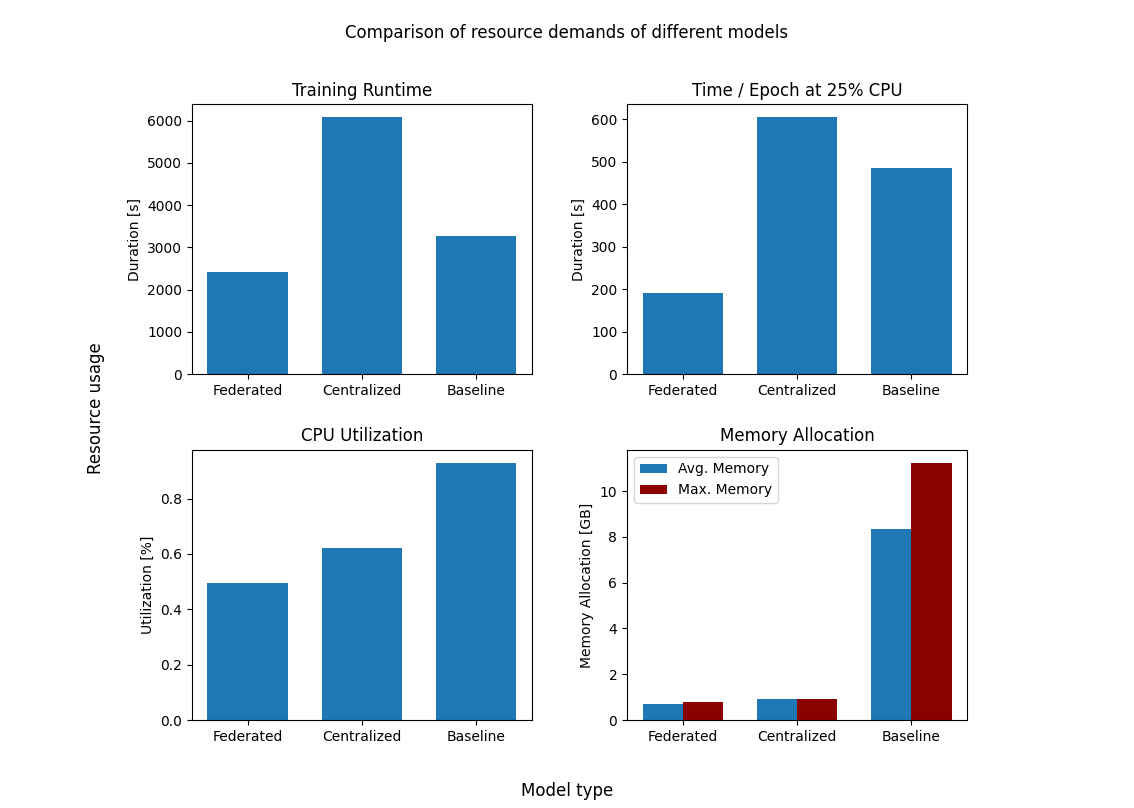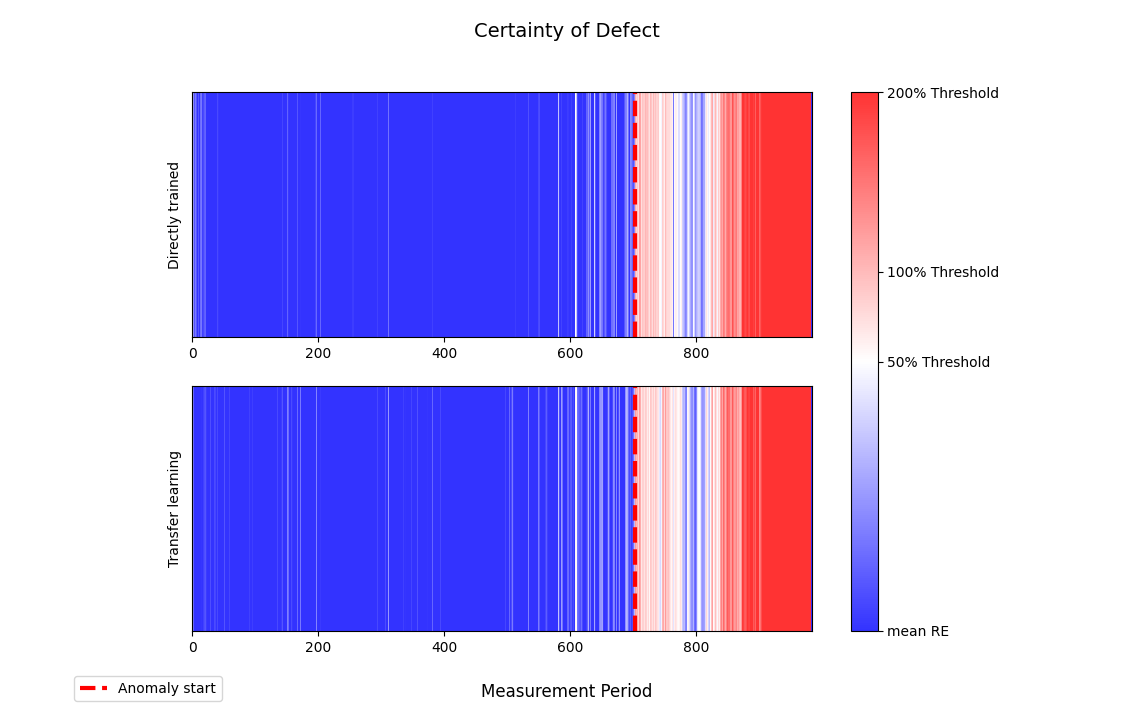This repository contains the implementation of a federated learning approach to autoencoder-based condition monitoring, focused on an industrial application in the resource-limited domain of the Internet of Things.\
As industrial IoT devices are often resource-limited, they are neither able to perform computational intense model training nor to store large amounts of data.
My work took a stepwise approach to this problem, first optimizing the performance of an
autoencoder-based anomaly detection model under the given constraints.
This model was then utilized in a federated learning framework to improve generalizability,
while gaining data privacy from each individual device by not sharing actual training data.
| Federated Learning IIoT Use Case Scenario | Federated Learning Training Cycle |
|---|---|
 |
 |
To evaluate the success of my research, I conducted a case study on a real-world industrial application of
anomaly detection in rotating machines, which are commonly found in manufacturing.
Here, I compared the performance of the federated learning approach to a centralized approach, as well as a baseline model that was resource-unconstrained.
My research showed, that the proposed model improvements and chosen federated learning approach were able to achieve similar performance in the models anomaly detection capabilites, while at the same time strongly improving resource consumption and allowing for data privacy.
The autoencoder model and relevant functions for training and data preparation (i.e. normalization, batch-sizing..) are implemented in training.py.
The federated learning framework is implemented using two different worker scripts worker_training.py and worker_aggregation.py.
These are containerized by their corresponding dockerfiles in /build, producing two docker images that were run on a google compute engine testbed,
for evaluation.
The two models can be executed by their respective file, training.py, and baseline/baseline.py.
Here, either the resource-optimized model or the comparison baseline can be individually trained and evaluated.
Relevant training parameters can be specified in the config.yaml file.
To run the federated learning approach, the docker images need to be built which can then be deployed to a cloud solution such as GCP.

